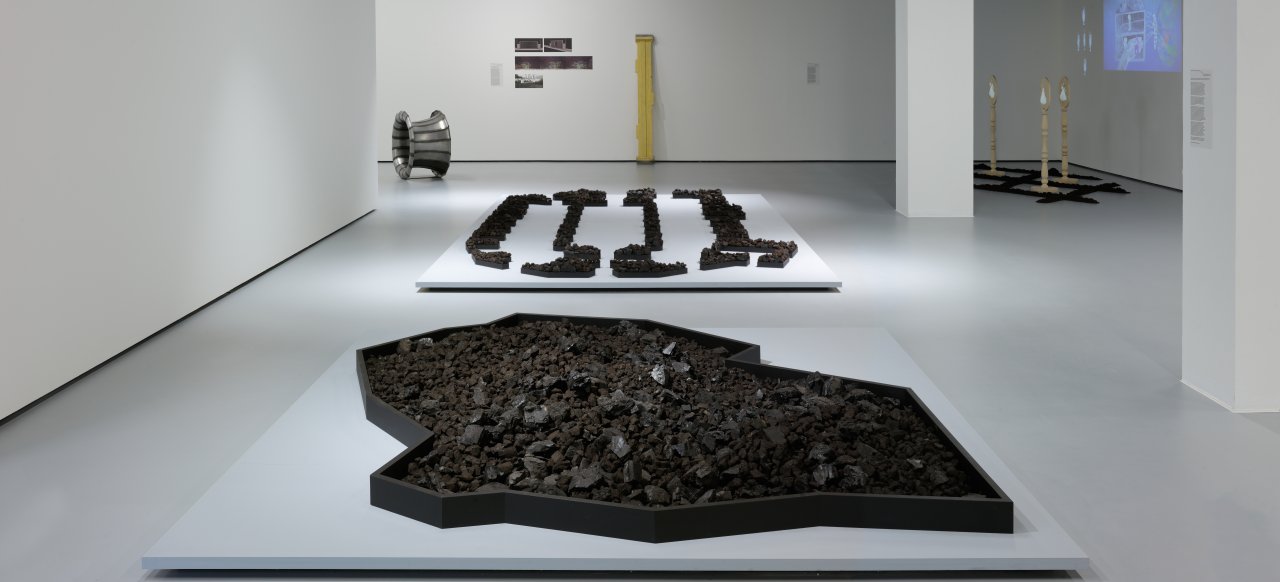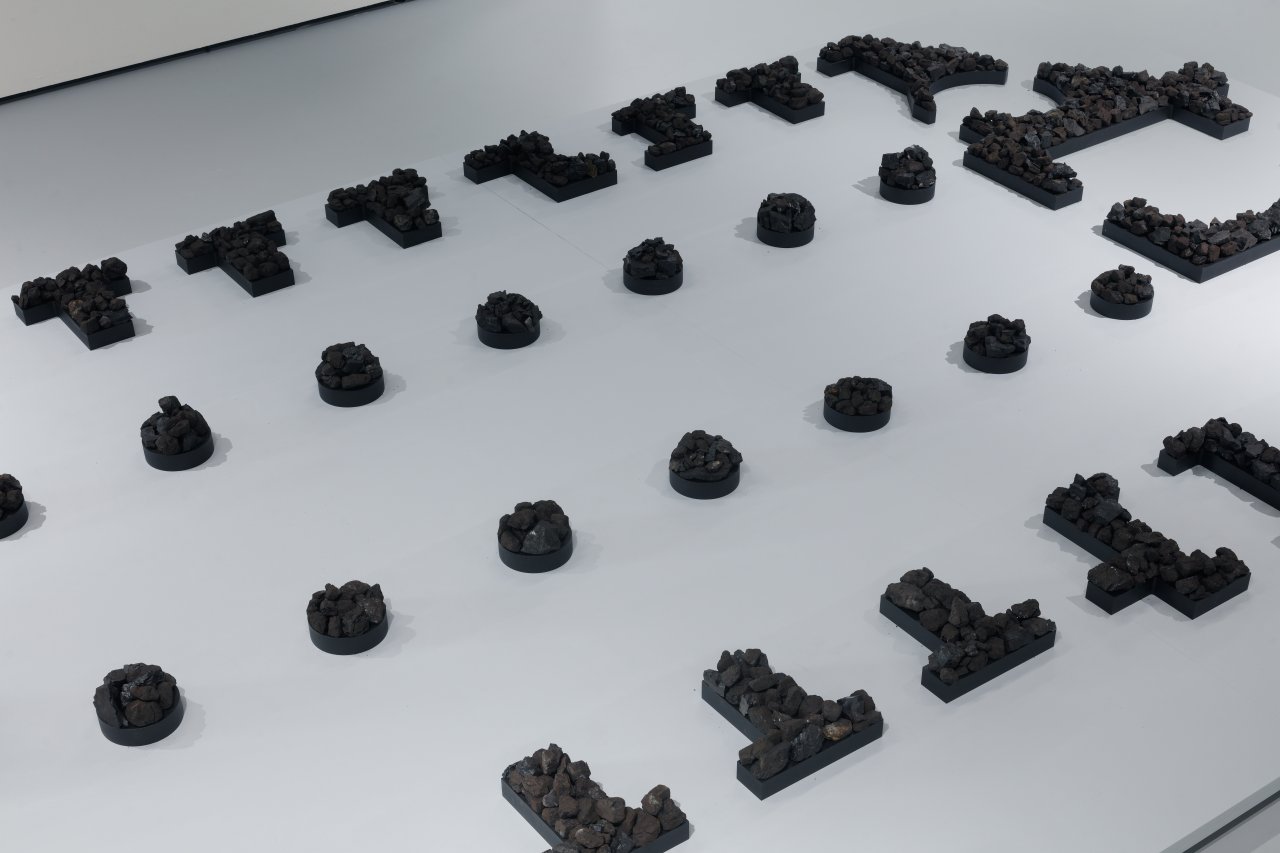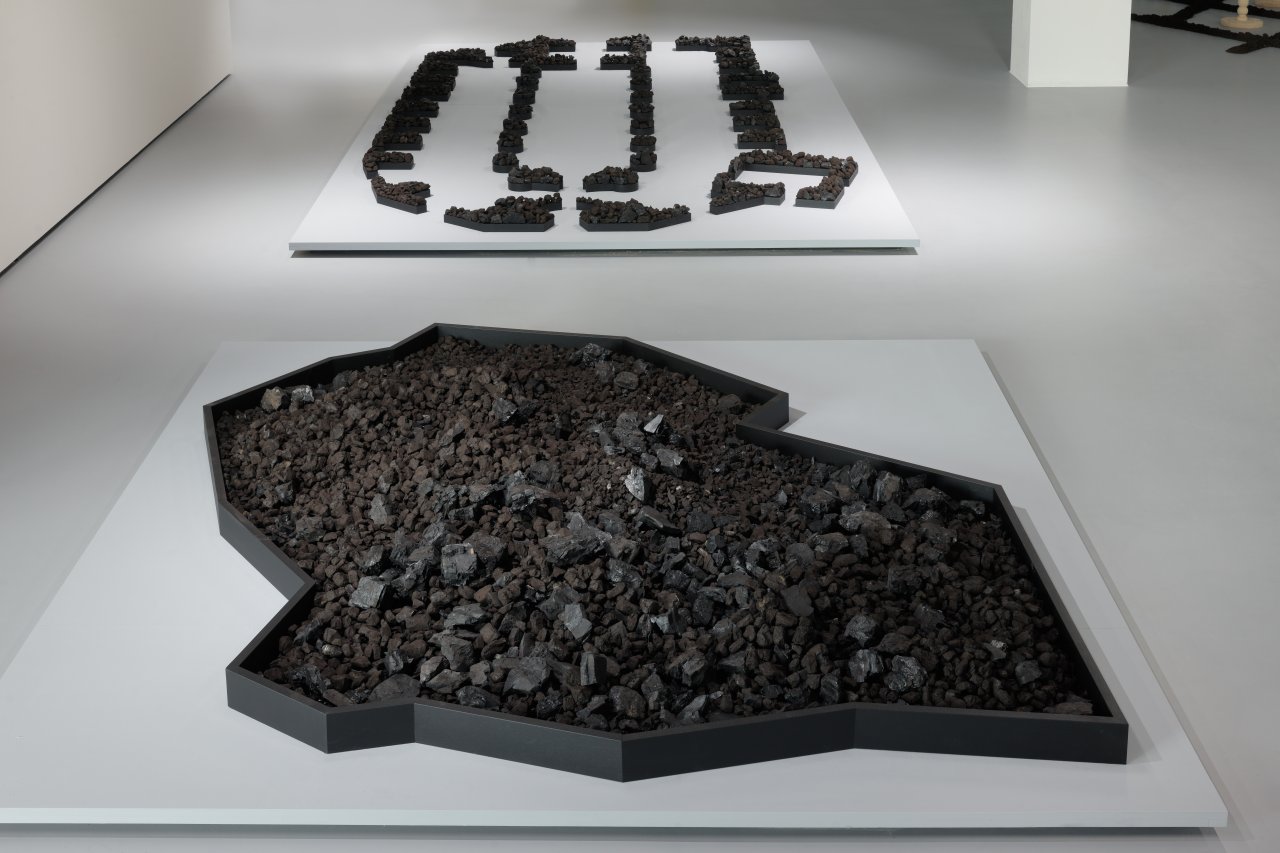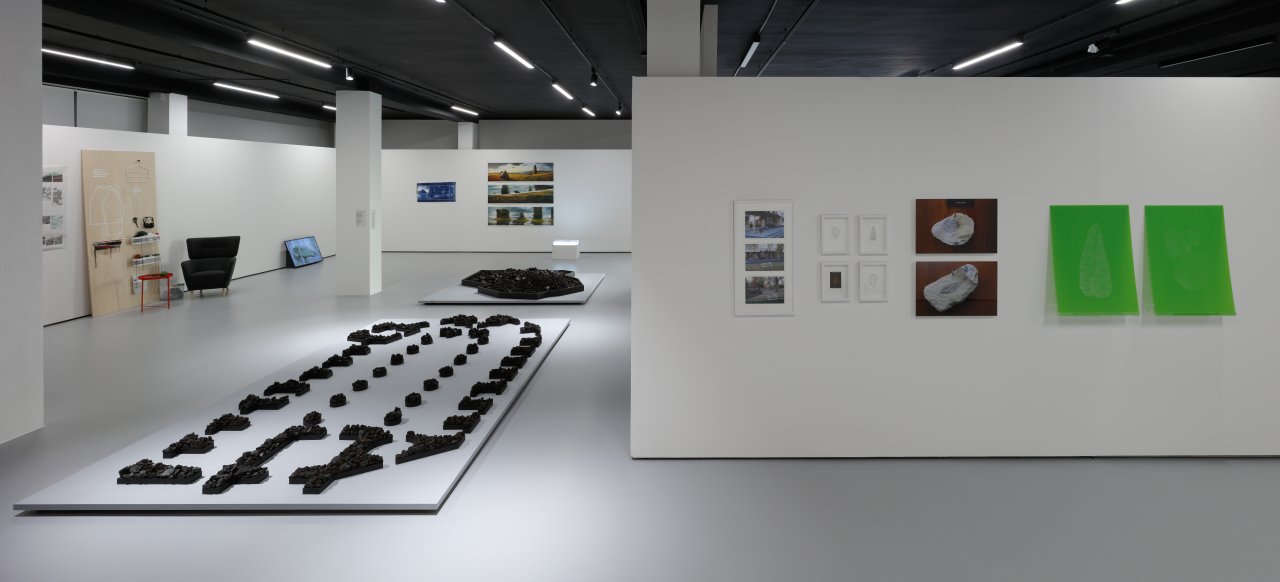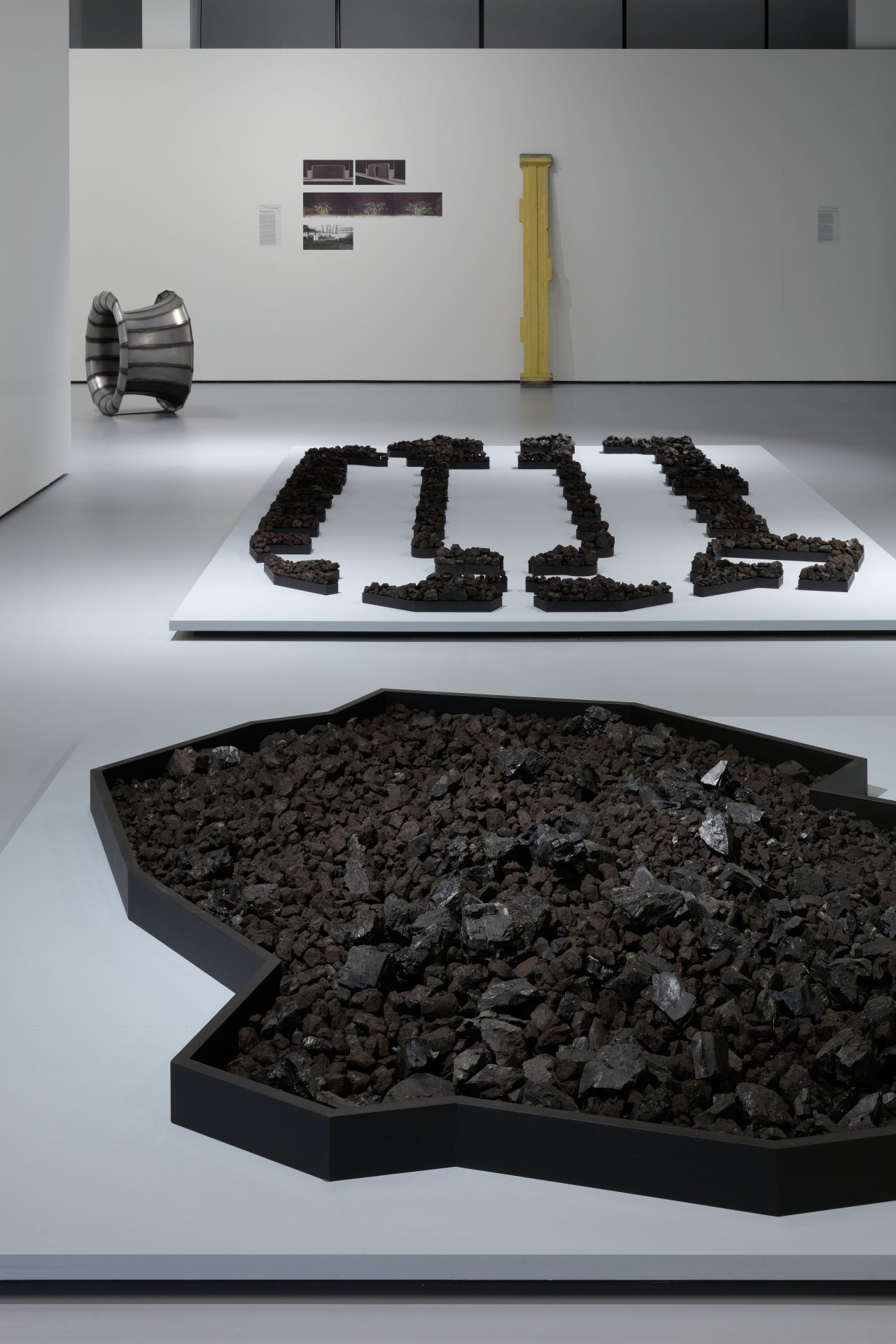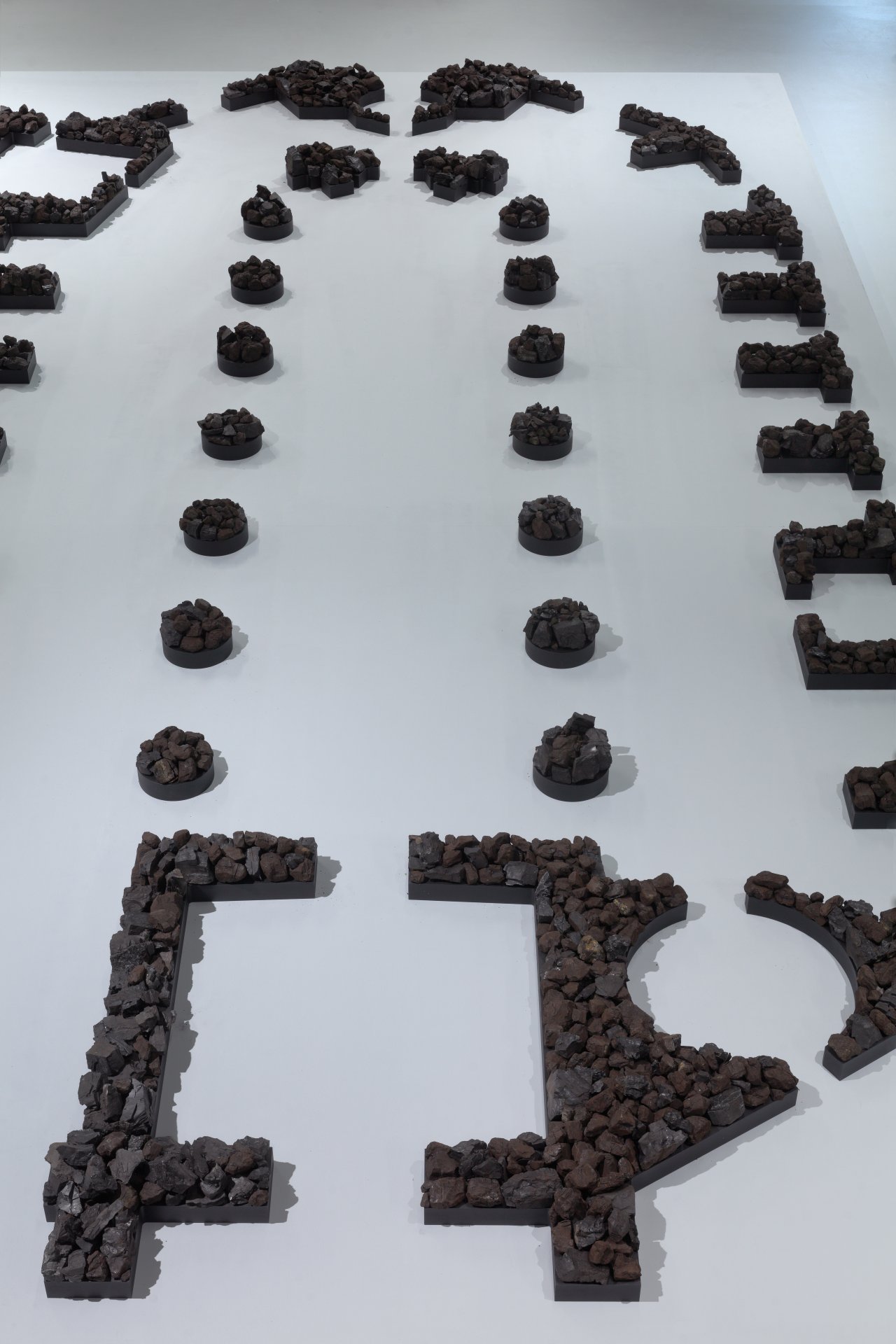Soul City 2023
spatial installation, wood, charcoal
The legacy and ongoing business of coal mining in the Czech Republic continues to take its toll on the landscape in a strange and shocking way. For the uninitiated, satellite images and Google Earth maps are not enough when trying to read the changes in the surrounding landscape radically reshaped by mining waste dumped on adjacent land. From a vantage point on one of these now forested hills created by the mining machines, one can get a view of a lake with beaches, piers, and parking lots. Such a vantage point certainly contains a good deal of absurdity, since the lake, which is a former mining pit, is not yet a functioning natural biosphere and its surroundings have a number of major environmental pressures.
At the bottom of this lake, before the coal was extracted, there was the historic town of Most, whose gradual destruction began in 1964. The glory and the fall of this important settlement is now evidenced by the Gothic Church of the Assumption of the Virgin Mary, which has been moved 857 metres from the centre of the disappearing town and, in a strange no-man’s land, now dominates the banks of the new waterfront, offering visitors the apparent luxury of a lakeside riviera.
The authors of Soul City, Stephen Hobbs and Marcus Neustetter, hail from Johannesburg, whose social, urban and environmental character has long been shaped by large-scale gold mining. They thus find many points of contact between the violently transformed indigenous nature of their hometown and Most surrounded by an industrial non-scape. Indeed, much of Johannesburg’s mining economy served to intensify apartheid-era logics of land-use planning, privileging gold and mineral extraction over communities and the very history and memory that defined them. To this day, the mining belt that stretches from east to west Johannesburg maintains an atmosphere of neglect, decay and ruin.
For artists, the man-made landscape of Most and other mining areas in the north has a captivating speculative quality. The fact that intensive mining activity may continue in this area for many decades to come represents a specific way of depicting horticulture on a monumental scale, and offers any number of futuristic imaginings associated with the development of human settlements and leisure centres in a landscape constructed on the basis of an anti-human value system. Stephen Hobbs and Marcus Neustetter’s installation prepared for the Gardening of Soul exhibition draws viewers into a hyper-distillation of history, place, capital and religion through the creation of artefacts using charcoal.
We welcome you to witness the action of our amazing excavators, trucks and tippers, wheel loaders and bulldozers creating the future soul of your city.
